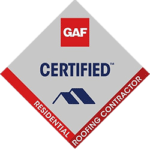As a homeowner in Minnesota, one of the pressing questions you might have is, “How often should I expect to replace the siding on my home?” This is an important question because the answer can significantly impact your home maintenance budget and schedule. The siding on your home not only contributes to the aesthetic appeal of your property but also plays a pivotal role in protecting it from harsh weather conditions, which are quite common in Minnesota.
Deciding on Siding Replacement
The type of siding replacement depends on a variety of factors including the type of material used, the quality of installation, and the severity of the local climate. In this blog post, we will delve into these factors, providing you with a comprehensive understanding of when and why you should consider replacing your home’s siding.
Understanding Different Siding Materials
When it comes to the longevity of your home’s siding, the type of material used is an important factor. Here are some common siding materials along with their estimated lifespan:
- Vinyl Siding: Vinyl is one of the most popular siding materials due to its affordability and durability. High-quality vinyl siding can last anywhere between 20 to 40 years if properly maintained. It’s resistant to common problems like pests and rot, but it can be damaged by severe weather or extreme heat.
- Wood Siding: Wood provides a classic look that many homeowners love. However, it requires regular maintenance to keep it in good shape. With proper care, wood siding can last 20 to 40 years. But without regular painting or staining, it can be susceptible to issues like rot and insect damage.
- Fiber Cement Siding: Fiber cement is a robust and low-maintenance option that can last up to 50 years. It’s resistant to many common siding problems, including rot, fire, and termites. However, it can be more expensive than other options.
- Metal Siding: Metal siding, commonly made from aluminum or steel, is incredibly durable. It’s resistant to many common siding issues and can last upwards of 40 years. However, it can be prone to dents and scratches.
- Brick or Stone Siding: Brick and stone are some of the most durable siding materials available. With minimal maintenance, these materials can last over 100 years. However, they are also among the most expensive siding options.
The type of siding material you choose will significantly influence how often you need to replace it. By understanding the pros, cons, and lifespans of different siding materials, you can make an informed decision for your home.
Recognizing Signs That Your Siding Needs Replacement
Regardless of the material used, it’s essential to inspect your siding for signs of damage or wear regularly. Early detection can save you from costly repairs down the line. Here are some key indicators that your siding might need replacement:
- Visible Damage: This could include cracks, holes, warping, or rot. These signs often indicate that your siding is no longer providing the protection your home needs.
- Higher Energy Bills: A sudden increase in your heating or cooling bills could signify that your siding isn’t insulating your home effectively.
- Interior Issues: Problems such as peeling wallpaper or loose drywall can indicate that moisture is seeping through your siding.
- Fading Color: Most siding is designed to hold its color for the majority of its lifespan. If your siding has faded, it may be nearing the end of its life.
- Mold, Mildew, or Fungus: If you notice any of these growing on or at the seams of your siding, it could mean water is penetrating it and potentially damaging the structure underneath.
Regular inspections and maintenance can extend the life of your siding. However, if you notice any of these signs, it might be time to consider replacing your siding to ensure your home remains well-protected against the elements.
Secure Your Home’s Future with A to Z Construction

Our team of professionals can evaluate the condition of your current siding and guide you through the process of choosing and installing a new one that will withstand any weather and keep your home looking its best for years to come. Reach out to A to Z Construction today to learn more.











